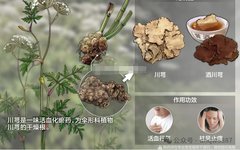|
Chuanxiong (Ligusticum chuanxiong) is aromatic and disperses warmth, entering the liver, gallbladder, and pericardium meridians. It ascends to the head and descends to the blood sea, circulating blood and qi internally while dispersing wind and cold externally. It is a powerful blood invigorator, treating blood stasis and various pains, especially suitable for those with cold symptoms, earning it the title of “the qi herb in blood” from ancient practitioners. It is effective for various types of headaches, particularly those caused by wind-cold and blood stasis; it can also be used for wind-heat, wind-damp, and blood deficiency headaches, hence the saying, “headaches are never far from Chuanxiong.” |
What Doctors Say
Chuanxiong has a spicy flavor and a warm nature, entering the liver, gallbladder, and pericardium meridians. It has the effects of invigorating blood and qi, dispelling wind and alleviating pain, nourishing blood and regulating menstruation, dilating blood vessels, and promoting circulation.
1. Invigorating Blood and Qi: Chuanxiong has a spicy flavor and dispersing properties, with a warm nature that can warm and unblock, achieving the purpose of invigorating blood and qi. It is a qi herb in blood, treating symptoms caused by qi stagnation and blood stasis, especially suitable for pain caused by blood stasis and qi stagnation, such as chest pain due to heart vessel obstruction, including coronary heart disease and angina. It can also be used for traumatic injuries accompanied by blood stasis.
2. Dispelling Wind and Alleviating Pain: Chuanxiong is spicy and warm, rising and dispersing, thus having a good effect in dispelling wind and alleviating pain. It is commonly used to treat various rheumatic pains and headaches, especially suitable for wind-cold, wind-heat, and blood deficiency headaches. Correct differentiation is necessary before use; if the headache is caused by liver yang rising, caution is advised to avoid worsening symptoms.
3. Nourishing Blood and Regulating Menstruation: Chuanxiong is also a common gynecological herb, capable of regulating menstrual flow and relieving stagnation, with the effect of nourishing blood and regulating menstruation. It can be used to treat blood stasis, amenorrhea, and dysmenorrhea, improving women’s menstrual volume and shortening menstrual periods. It also has a certain alleviating effect on postpartum pain and lochia retention.
4. Dilating Blood Vessels: Chuanxiong has the effect of dilating small blood vessels, increasing vascular flexibility, reducing vascular resistance, promoting blood circulation, and helping to lower blood pressure and improve circulatory system function.
5. Regulating Menstruation and Activating Channels: In TCM theory, Chuanxiong is believed to have the effect of regulating menstruation and activating channels, which can be used to regulate women’s menstrual irregularities, menstrual pain, and postpartum recovery issues.
It is important to note that this herb should not be used independently and should be taken under the guidance of a physician.
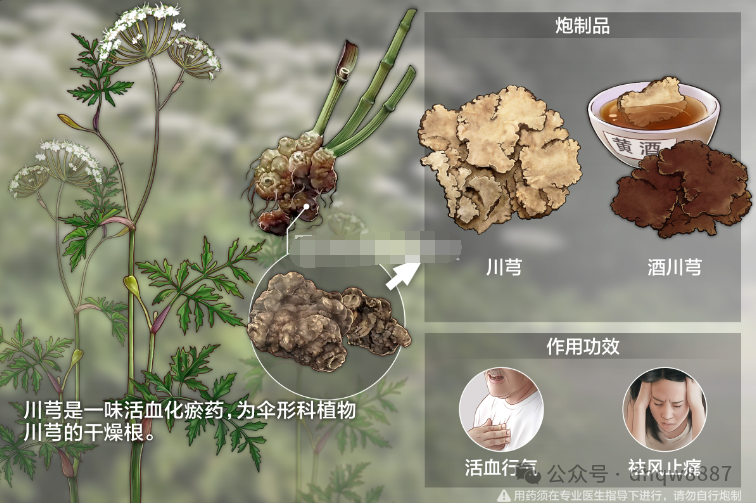
Pharmacological Knowledge
【Herb Name】Chuanxiong (Ligusticum chuanxiong)
【Alias】 Shanjuqiong, Xiongshao, Xiangguo, Huxiang, Maxian, Xixiong, Guanxiong.
【Source】 The rhizome of the plant Ligusticum chuanxiong Hort. from the Umbelliferae family.
【Distribution】 Widely cultivated in Sichuan.
【Harvesting and Processing】 Harvest in the summer of the second year after planting when the nodes on the stem are significantly prominent. Dig out the rhizome, shake off the soil, remove the stems and leaves, and dry.
【Herb Characteristics】 Irregularly nodular, fist-shaped lumps, 2-7 cm in diameter. The surface is yellow-brown, rough, and wrinkled, with many parallel raised nodes, a depressed round stem scar at the top, and numerous small tuberous root scars on the underside and nodes. The texture is solid and not easily broken, with a yellowish or grayish-yellow cross-section, scattered with yellow-brown oil chambers, and the growth rings are wavy. It has a strong aroma, a bitter and spicy taste, with a slight numbing sensation on the tongue and a mild sweetness aftertaste.
【Pharmacological Research】 Effects on the cardiovascular and cerebrovascular systems: it has an inhibitory effect on the heart; can dilate blood vessels and lower blood pressure; increases coronary blood flow; protects against myocardial and reperfusion injury; improves microcirculation; enhances cerebral circulation and alleviates cerebral ischemia. It improves the blood system, has diuretic effects, enhances the immune system; can inhibit bronchoconstriction caused by leukotrienes, histamine, and prostaglandin E2; can prevent and protect against epinephrine-induced experimental pulmonary edema in rats; has anti-tumor and anti-radiation effects.
【Chemical Composition】 The rhizome contains about 1% volatile oil. 40 components have been identified in the oil, accounting for 93.64% of the volatile oil, with the main components being ligustilide (58%), 3-butylidenephthalide (5.29%), and α-pinene (6.08%), along with ferulic acid, chuanxiongine, 3-allylphenol, laurene, chuanxiongine, palmitic acid, carotenoids, β-sitosterol, and other components.
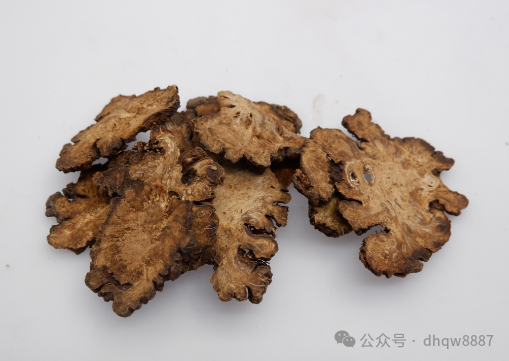
——–Efficacy and Compatibility———
【Nature and Taste】 Warm in nature, spicy in flavor. Enters the liver, gallbladder, and pericardium meridians.
【Efficacy and Effects】 Invigorates blood and qi, dispels wind and alleviates pain. It belongs to the category of blood-invigorating and pain-relieving herbs.
【Clinical Applications】 Internal use: decoction, 3-10 grams; powdered, 1-1.5 grams per dose; or in pills or powders. External use: appropriate amount, powdered and sprinkled, or used in a paste, or decocted for gargling. Used for chest pain, stabbing pain in the chest and sides, traumatic swelling and pain, menstrual irregularities, dysmenorrhea, abdominal pain from masses, headaches, and rheumatic pain.
【Contraindications】 Caution in cases of excessive menstruation, pregnancy, and bleeding disorders; contraindicated for those with yin deficiency and excess heat.
【Related Formulas】 For reference only
① For postpartum abdominal pain due to blood stasis: 24 grams of Angelica, 9 grams of Chuanxiong, 14 pieces of peach kernel (peeled and pointed, ground), 1.5 grams of black ginger, 1.5 grams of honey-fried licorice. Use equal parts of yellow wine and children’s urine to decoct and take. (From “Fu Qingzhu’s Gynecology” Shenghua Decoction)
② For excessive postpartum bleeding and fainting: 15 grams of Chuanxiong, 15 grams of Angelica, 15 grams of JIng Jie (stir-fried black). Prepare as one dose, decoct in water, and take with wine and children’s urine. (From “Song’s Gynecology Secretary” Chuanxiong Decoction)
③ For postpartum qi deficiency, feeling wind-cold, headache with chills and fever: 6 grams each of Angelica and Chuanxiong, 3 grams each of Perilla and Kudzu. Crush and add three slices of ginger, decoct and take. (From “Medical Lantern Continuation” Modified Chuanxiong Decoction)
④ For migraines and headaches: 9 grams each of sweet chrysanthemum, gypsum, and Chuanxiong, ground into powder. Take 3 grams each time, mixed with clear tea. (From “Chishui Xuanzhu” Chuanxiong Powder)
⑤ For nasal congestion and loss of smell: 30 grams each of Chuanxiong and magnolia flower, 0.9 grams of asarum (removing sprouts and leaves), 15 grams of Akebia. Prepare the four ingredients, pound and sieve into powder. Use a small amount wrapped in cotton to plug the nose, changing when wet. (From “Shengji Zonglu” Chuanxiong Powder)
【Preparation Methods】
· Chuanxiong
Take the raw herb, remove impurities, separate by size, and wash clean. Soak in water until the fingernail can penetrate the outer skin, take out, moisten thoroughly, slice thinly, and dry. Sift out debris.
· Wine Chuanxiong
Take Chuanxiong slices, mix with a specified amount of yellow wine, slightly moisten, and wait until the wine is absorbed. Place in a frying container, heat gently until brown, then take out and cool. Sift out debris. For every 100 kg of Chuanxiong slices, use 10 kg of yellow wine. This product contains volatile oil, so check during moistening to prevent oil degradation, and avoid high-temperature drying.
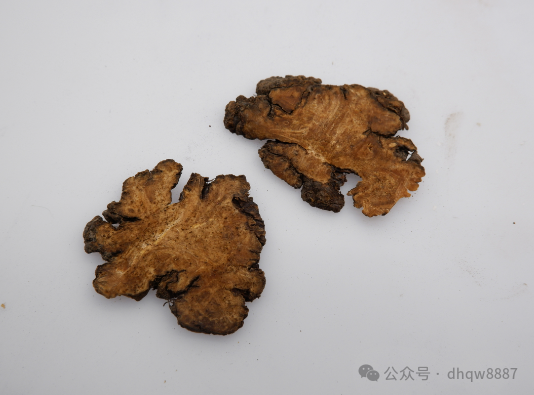
Compound preparations containing Chuanxiong
Chuanxiong Tea Powder
Dispels wind and alleviates pain. Used for headaches caused by external wind invasion, or with chills, fever, and nasal congestion.
Da Chuanxiong Oral Liquid
Invigorates blood and resolves stasis, pacifies the liver and extinguishes wind. Used for headache, dizziness, neck stiffness, and numbness in the limbs due to blood stasis obstructing channels or liver yang transforming into wind.
Compound Chuanxiong Tablets
Invigorates blood and resolves stasis, opens channels and alleviates pain. Used for stable angina pectoris due to heart blood stasis obstruction.
Shu Xiong Capsules
Invigorates blood and resolves stasis, opens channels and alleviates pain. Used for chest pain due to blood stasis obstruction, presenting with chest tightness and stabbing pain in the precordial area; for coronary heart disease angina pectoris with the above symptoms.
Tian Shu Capsules
Invigorates blood, pacifies the liver, opens channels and alleviates pain. Used for long-term headaches due to blood stasis obstruction or liver yang rising, or for dizziness, flank pain, insomnia, irritability, dark tongue or purplish spots; for vascular headache, tension headache, and hypertension headache with the above symptoms.
Si Wu Decoction
Nourishes blood and regulates blood. Used for symptoms of blood deficiency and stagnation. Dizziness, palpitations, insomnia, pale complexion, menstrual irregularities, reduced menstrual flow or amenorrhea, abdominal pain, and possibly hard lumps; pale tongue, pale lips, and nails, thin and wiry or thin and rough pulse.
Wen Jing Decoction
Warms the meridians, nourishes deficiency, disperses cold, nourishes blood, and resolves stasis to alleviate pain. Used for symptoms of deficiency-cold in the Chong and Ren channels, and blood stasis obstruction.
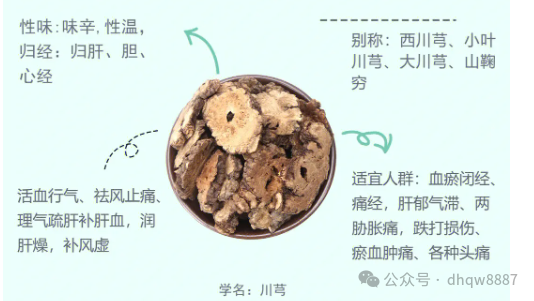
Precautions
Contraindicated for those with yin deficiency and excess heat, as well as those with upper excess and lower deficiency and weak qi.
-
During medication, avoid cold, raw foods, and spicy, greasy foods.
-
Children should use under the guidance of a physician and adult supervision.
-
Please store herbs properly and do not share your medication with others.
| =====Previous Classics===========Chinese Medicine – The Efficacy and Function of Chicken Inner GoldChinese Medicine – The Efficacy of Jasmine Flower (Regulating Qi and Alleviating Pain, Warming the Middle and Harmonizing the Stomach, Reducing Swelling and Detoxifying)Effective Abdominal Massage, Using Eight TechniquesThose “Scientific” Rumors Related to HealthThe Top Ten Famous Formulas in TCM – Bu Zhong Yi Qi DecoctionChinese Medicine – The Efficacy and Contraindications of Purple AsterChinese Medicine – The Efficacy and Contraindications of Sichuan PepperChinese Medicine – The Efficacy and Function of AlismaChinese Medicine – The Efficacy and Function of Honeysuckle Delaying Aging, Nourishing the Kidneys is Key |
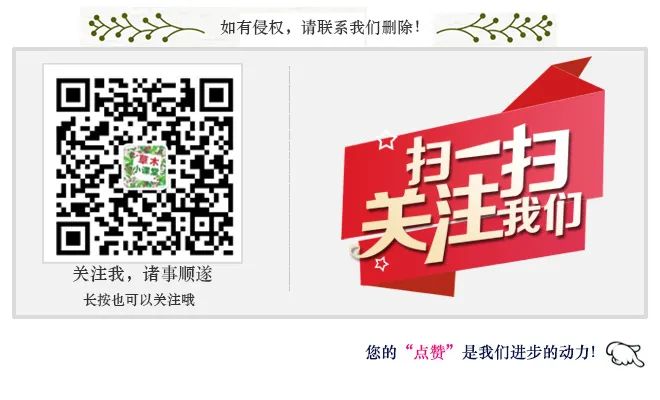
Note: Please do not self-medicate; follow medical advice.

